There are many traditional Punjabi wedding rituals. These include the Ghara Gharoli ceremony, the Mehendi ceremony, and the Jago ceremony. These ceremonies are important to Punjabi culture, and are a must-try if you are planning a Punjabi wedding. These rituals take place before the wedding and include the groom’s family members. The bride-to-be is traditionally dressed in clothes that her in-laws brought with her. Her mother covers her head with a red scarf, symbolizing her responsibility to the groom’s family. The groom marks her with vermilion, or sindoor, and offers her sweets. The ceremony ends with the exchange of gifts and a grand celebration.

Punjabi Wedding Rituals
Ghara Gharoli ceremony – Punjabi Wedding Rituals
The Ghara Gharoli ceremony in Punjabi marriage rituals marks the beginning of the new married life. It is held during the night before the wedding. During this time, the bride and her family stay up all night to prepare for the wedding. The bride’s mother carries a copper ‘khada’, which has clay lamps inside, while other women in the family shake it with a long stick with bells. In addition, the bride’s family visit their relatives’ houses and give them sweets.





The groom’s family members also play a key role in the Ghara Gharoli ceremony. They welcome the groom’s relatives with greetings called milni. Once inside the wedding hall, the groom is made to stand on a small pedestal. The groom and his family then exchange garlands. However, there is a tradition that prevents a single garland being put on the groom’s head, due to competition between relatives.
The Ghara Gharoli ceremony is one of the most important rituals in the Punjabi wedding. It is the first step of the wedding ceremony. The bride wears the traditional maangtika and bangles, as well as the traditional dhoti and saree. After this, she receives a red cloth. In addition, her family and friends sing traditional wedding songs.
During the Ghara Gharoli ceremony, both the bride and the groom are given red threads to tie around their wrists. The threads are sacred and are tied several times around a betel nut. The threads are tied to their wrists by a pandit.

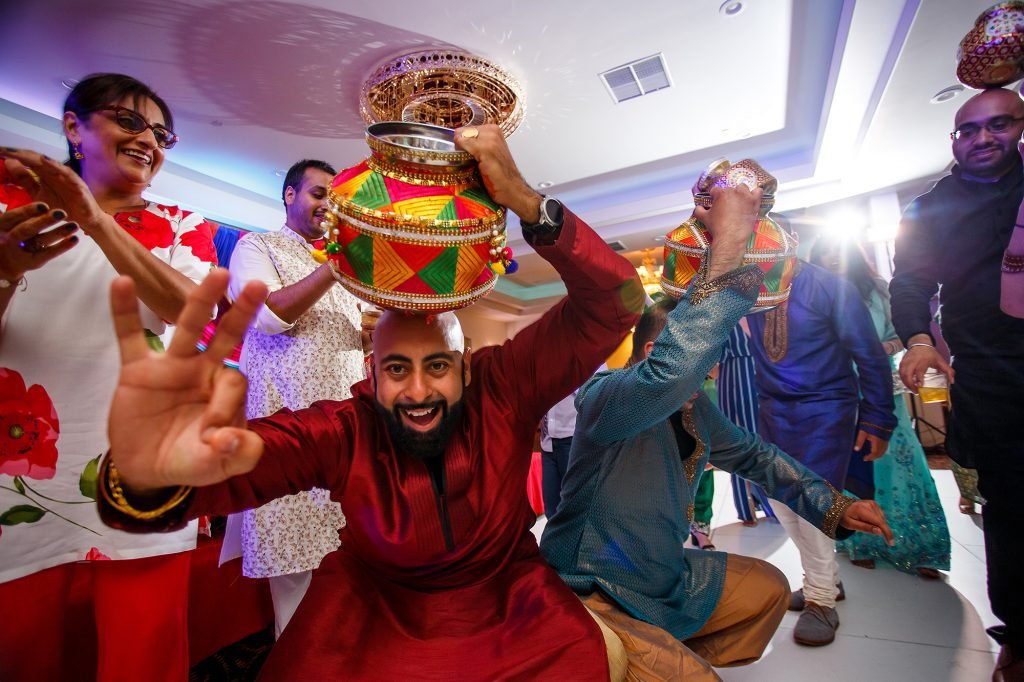
Punjabi Wedding Rituals
This ceremony marks the formal engagement of the couple. It takes place about a month or two before the wedding. It is a grand affair in which family members and close friends greet the couple and exchange gifts. The groom’s family also attends the Ghara Gharoli ceremony, giving the bride a tika (a ring) and arti.
The Ghara Gharoli ceremony in Punjabi marriage rituals concludes with a lavish wedding dinner. It is important to sample the food that is served at a Punjabi wedding. Typically, the meal consists of multiple varieties of food from separate stalls and live counters.
Mehendi ceremony- hindu punjabi wedding rituals
The Mehendi ceremony in Punjabi wedding traditions is a very important ceremony. The future bride receives mehendi from her future mother-in-law, which is usually beautifully decorated. She then receives her bridal garb, which also includes the traditional ring and jewelry. The groom and his family are also present during the ceremony. The bride’s future family members and relatives are given cash and gifts.
The Mehendi ceremony is a traditional Punjabi wedding ritual that occurs in the morning of the wedding. It involves touching a betel nut or a shell called Kaudi to the bride’s right wrist. The eldest maternal uncle also performs the Havan (sacred fire) ceremony to purify the bride’s hands. Then, the bride’s younger brother takes a handful of rice flakes, and he places it on the bride’s hands. The bride wears the bangles for a month after the wedding.
Mehendi, also known as henna, is one of the most important rituals in any Punjabi wedding. It is a ritual that ties together the bride and her family, with the groom’s name hidden in the designs. The mehendi design is then allowed to dry, giving the bride’s hands and feet a rich red color. This is a symbol of love and devotion, and the darker the color of the mehendi, the more love the bride will receive from her husband’s family. She is often helped by her family members, who are also invited to the mehendi ceremony.



Following the Mehendi ceremony, the bride’s family and friends will dance at her home. This ceremony is held in the last hours of the night and is considered a very emotional ritual. Traditionally, the bride’s mother-in-law will stay home during the Vidaai ceremony.
The Roka ceremony also marks the beginning of the relationship. During this ceremony, the families of the bride and the groom will visit each other’s homes, and the bride’s family will bring them gifts. The main purpose of this ceremony is to prevent the bride and groom from looking for other matches before the wedding.
Vatna ceremony
The Vatna ceremony in Punjabi wedding rituals is a symbolic tying of the knots. This rite is performed by the priest. The bride and groom are connected by a long, tied-in-a-knot garment. After the tying, the couple walk around the sacred fire four times. After each circling, chants are read in which the couple promises to stay together for life. After seven pheras, the couple stands up and the groom places a pinch of vermillion on the bride’s parting of the head. This is done in order to symbolize their marriage bond lasting seven lifetimes.


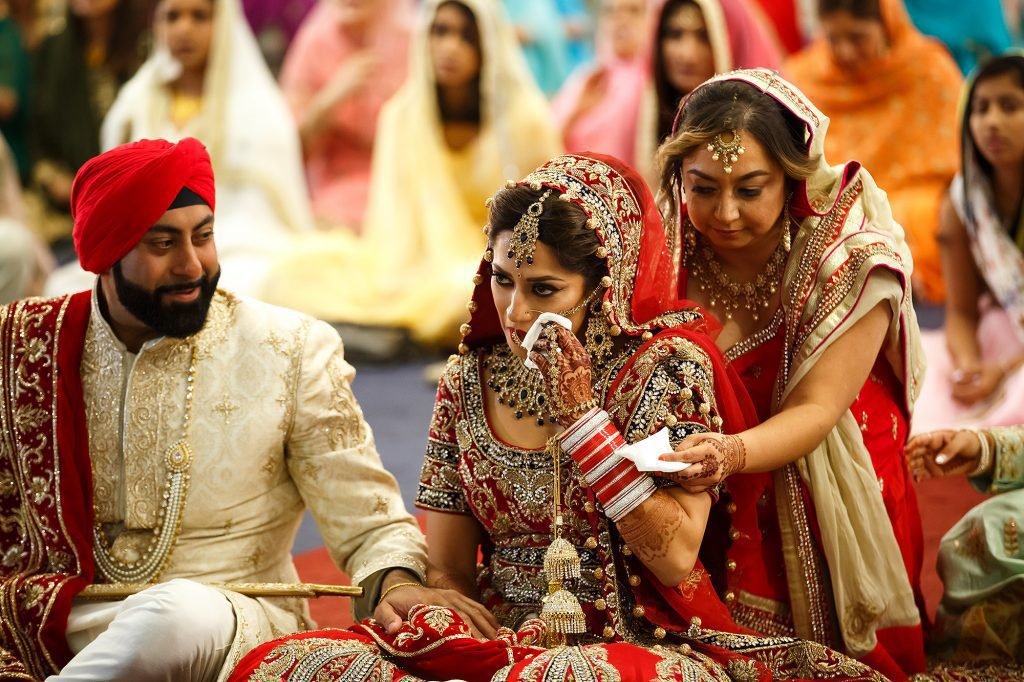

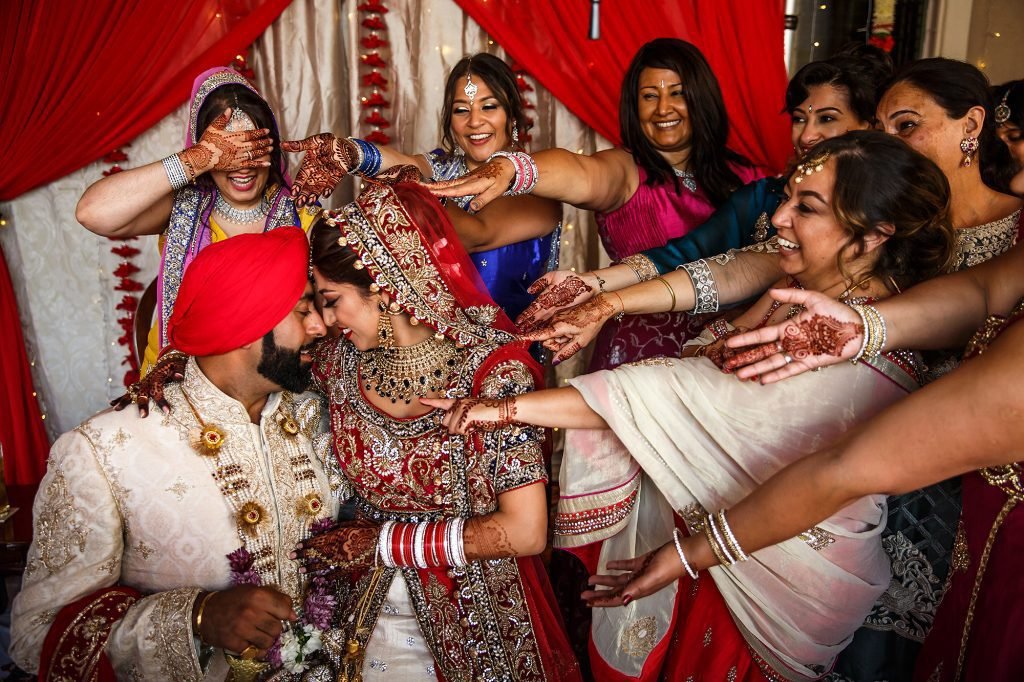
The groom and bride are then given a red cloth, and the bride is surrounded by family members and female friends. The bride is dressed in her wedding gown. The groom’s family also takes part in the ceremony. The bride is also adorned with flowers and garlands.
The maiya ceremony takes place two days before the wedding. It takes place before noon and again in the morning of the wedding day. This ritual purifies both the bride and groom, and is typically performed in the home of the bride and groom. During the ceremony, the bride and groom are not permitted to leave the home.
The Kanyadaan ceremony is one of the most important rituals of the Punjabi wedding rituals. It marks the day when the bride’s father gives her to her future husband. The groom accepts the girl’s hand and swears to care for her until death separates them.


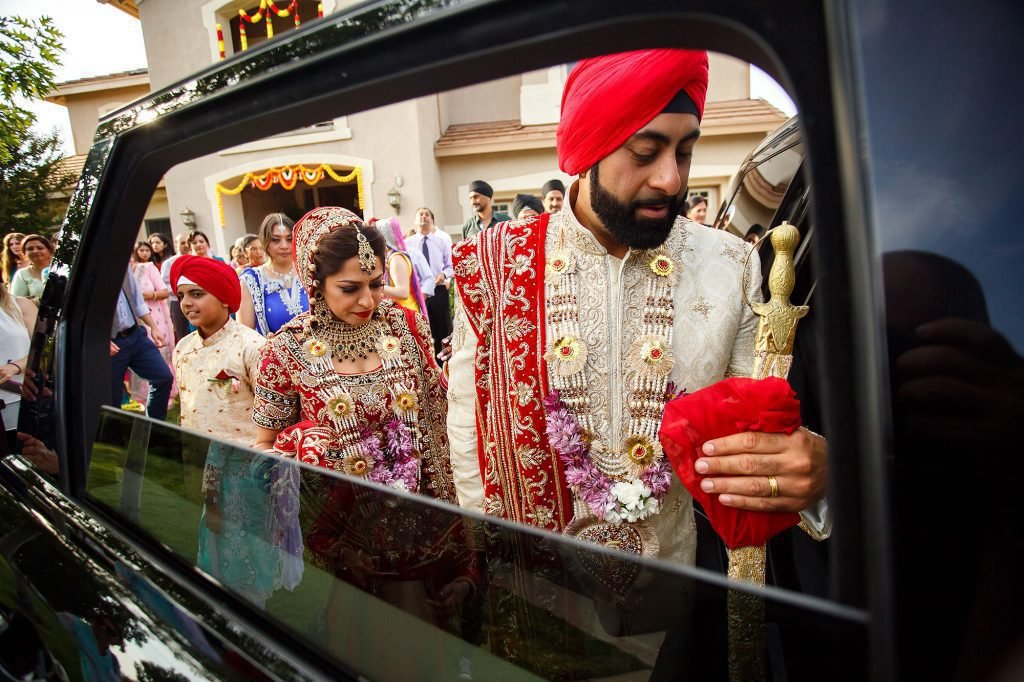
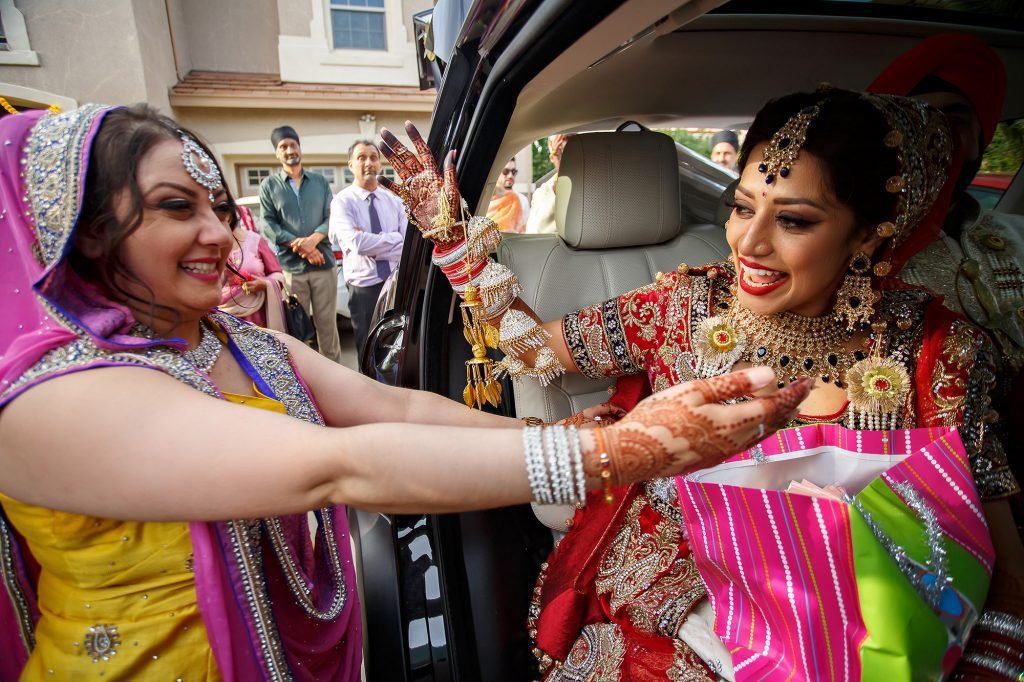


The Jago ceremony is similar to the American custom of “something borrowed, something blue.” However, it is the bride’s big day. During this ceremony, the bride receives a set of twenty-one red and ivory bangles from the bride’s maternal uncle. The uncle then purifies the bangles in a rose-petal bath. The bride is not supposed to see the bangles until the wedding ceremony.
The Chura ceremony is also an important part of the Punjabi wedding. It is the final preparation ceremony, and begins the night before the wedding. The bride’s parents and relatives will stay up all night singing songs and lighting diyas to celebrate the wedding.
Jago ceremony
The Jago ceremony is an integral part of Punjabi wedding rituals and takes place the night before the wedding. It is a time for singing and dancing. The bride’s female relatives, known as ‘Jagda’, carry a decorated copper ‘khada’ decorated with clay lamps, while others shake the vessel with a long stick with bells. The ladies sing Punjabi wedding songs and visit the houses of their friends and relatives.
The Jagdaan, or “shoe-stealing”, is another part of Punjabi wedding rituals. The bride’s family is responsible for hiding the groom’s shoes before the wedding. The groom must pay the family of the bride’s sisters or friends a ransom for the shoes. This payment is often made in gold or silver.
Earlier, this ceremony took place at the home of the bride. The newlyweds are then welcomed to their new home in a ceremony called the pani bharna. The newlyweds are forced to wear old clothes for a few days after the marriage. The ubtan, or turmeric paste, that is applied to the bride’s face and body, is believed to bring a glow to the bride and groom.
Following the Jago ceremony, the bride and groom exchange gifts and other wedding rituals. In most cases, the Jago ceremony is held on the night before the wedding day. However, some families prefer to leave a day between the two so that the bride and groom can recover. The Jago ceremony is an important part of Punjabi wedding rituals.
After the Jago ceremony, the bride’s family will have a musical gathering. The ladies of the bride’s family usually organize this event, traditionally involving songs and dancing around the bride. The bride’s family also invites the groom’s family. This is a grand affair and both sides present dance performances to Bollywood songs.
The Jago ceremony is considered to be a fun and memorable part of Punjabi wedding rituals. It is a time for creativity and fun, and the bride and her friends and siblings will often wear comical outfits. The bride may also rent a Punjabi lengha. The main goal of the Jago night is to make noise and make merry. During this time, decorated sticks and chaj will be banged on the floor.

